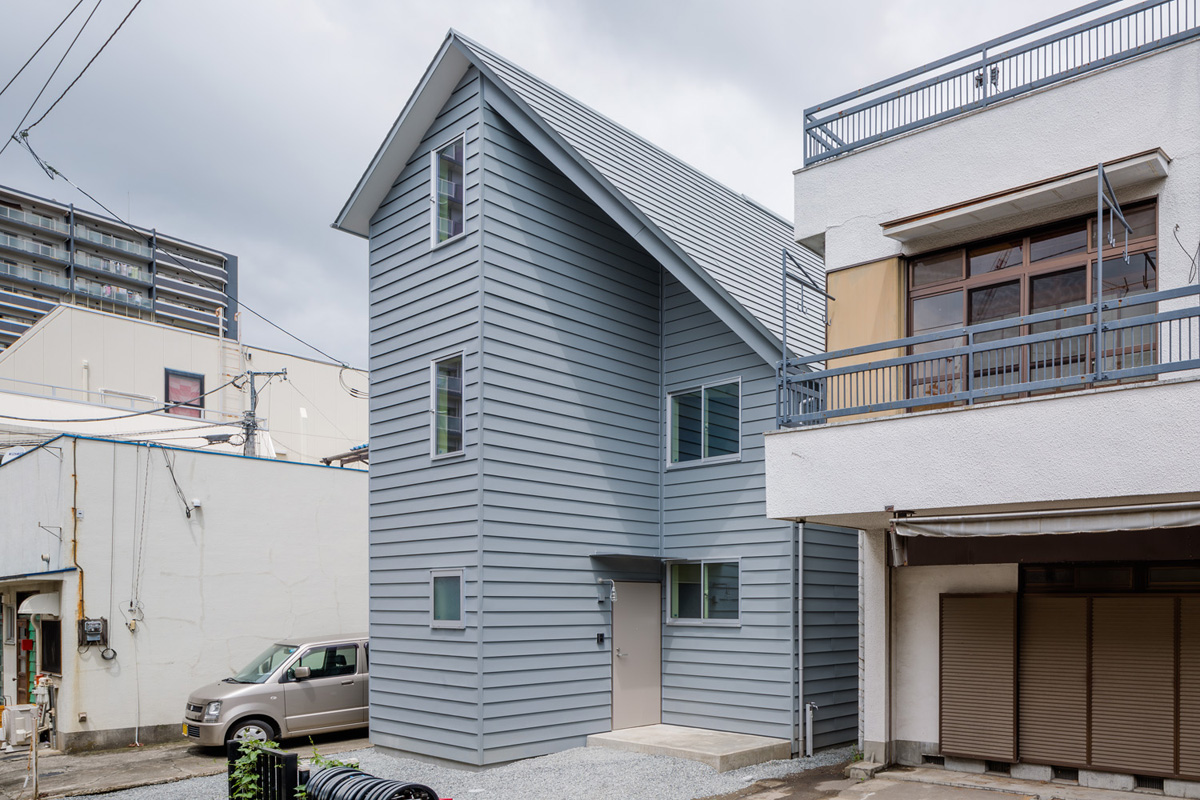
Category :
House in Tourimachi
通町の家
Residence @ Takasaki, Gunma
Design: Sunao Koase, Naoki Mashiyama /SNARK Inc. + Shin Yokoo /OUVI
Structural engineer: Shin Yokoo /OUVI
Construction: 宮下工業
Site area: 87.79㎡
Built area: 44.11㎡
Floor area: 108.59㎡
Number of floors: 3 Structure: Wood
Timeline: Design Sep.2012-Sep.2013 Construction Oct.2013-Jun.2014
Completion: Jul. 2014
Photo: Ippei Shinzawa
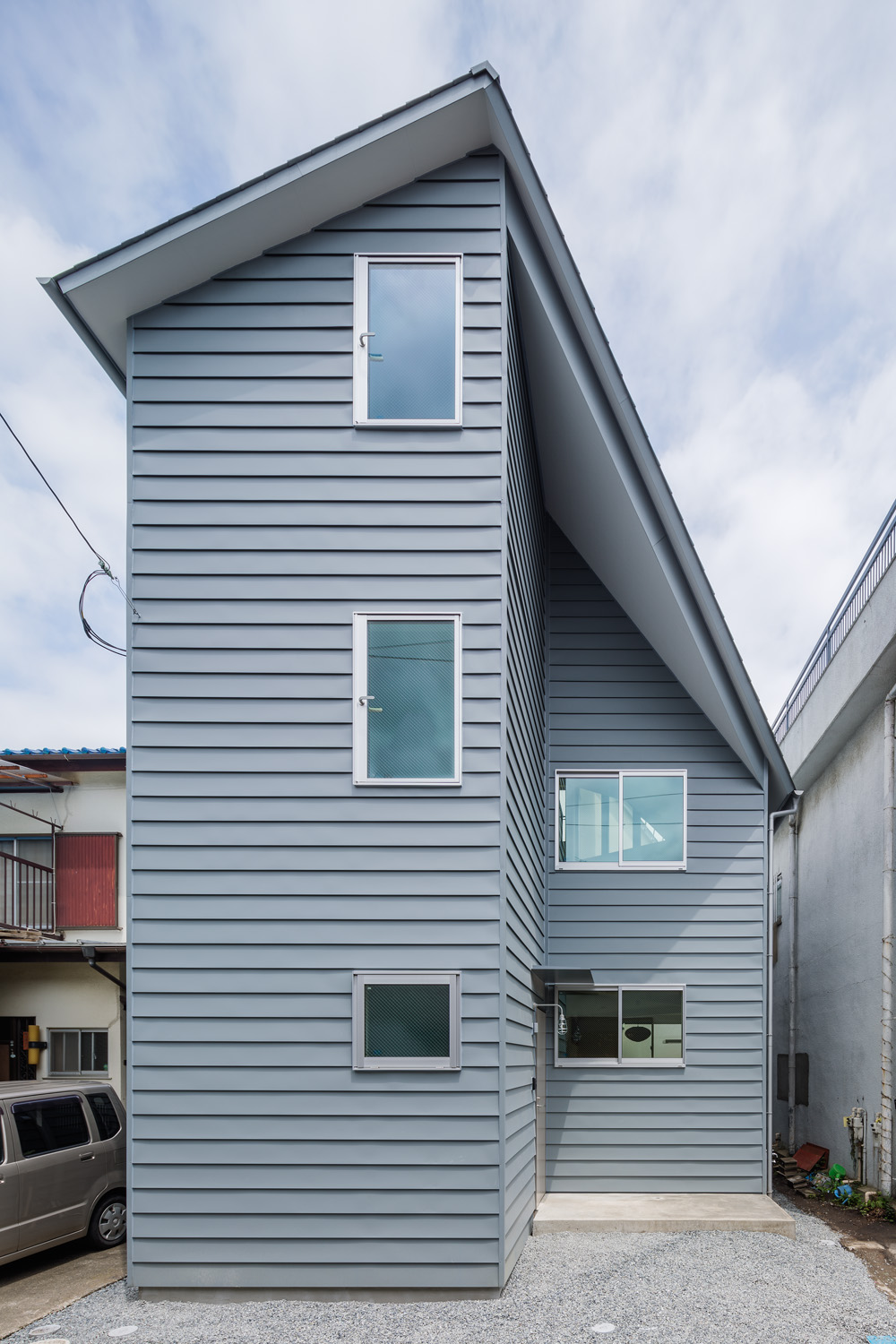
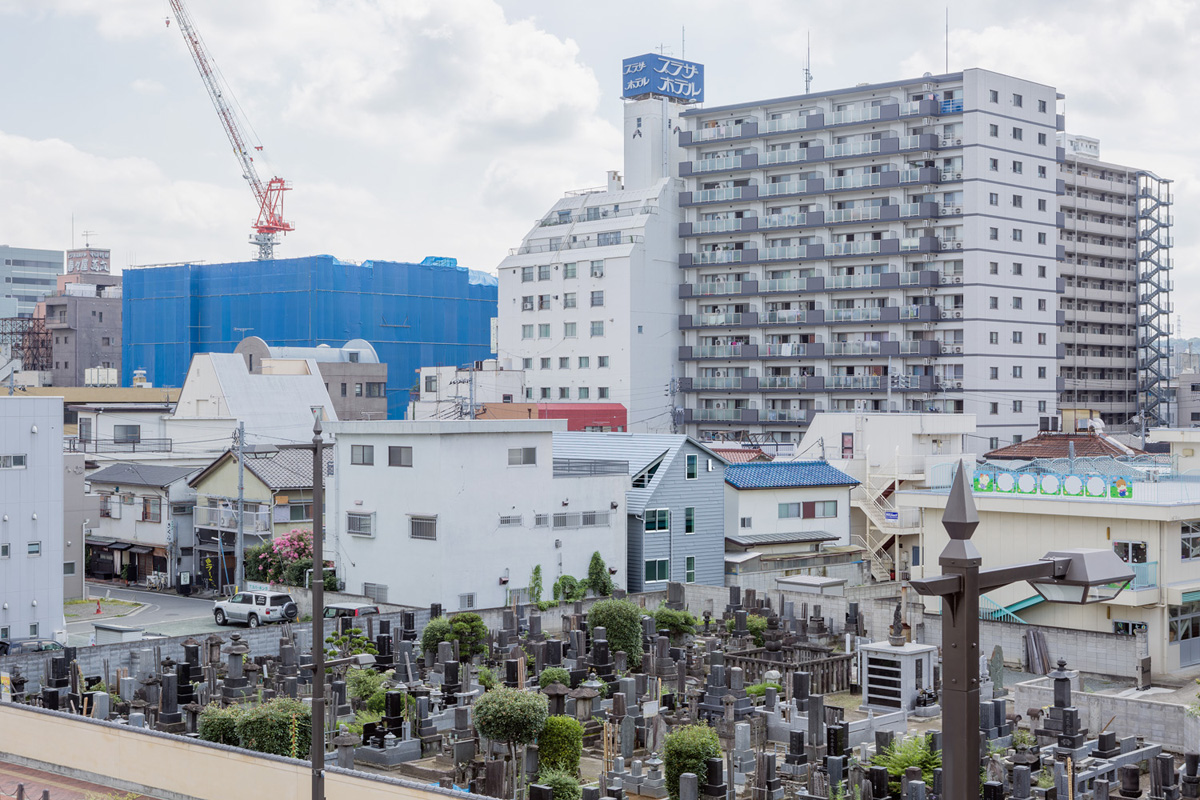
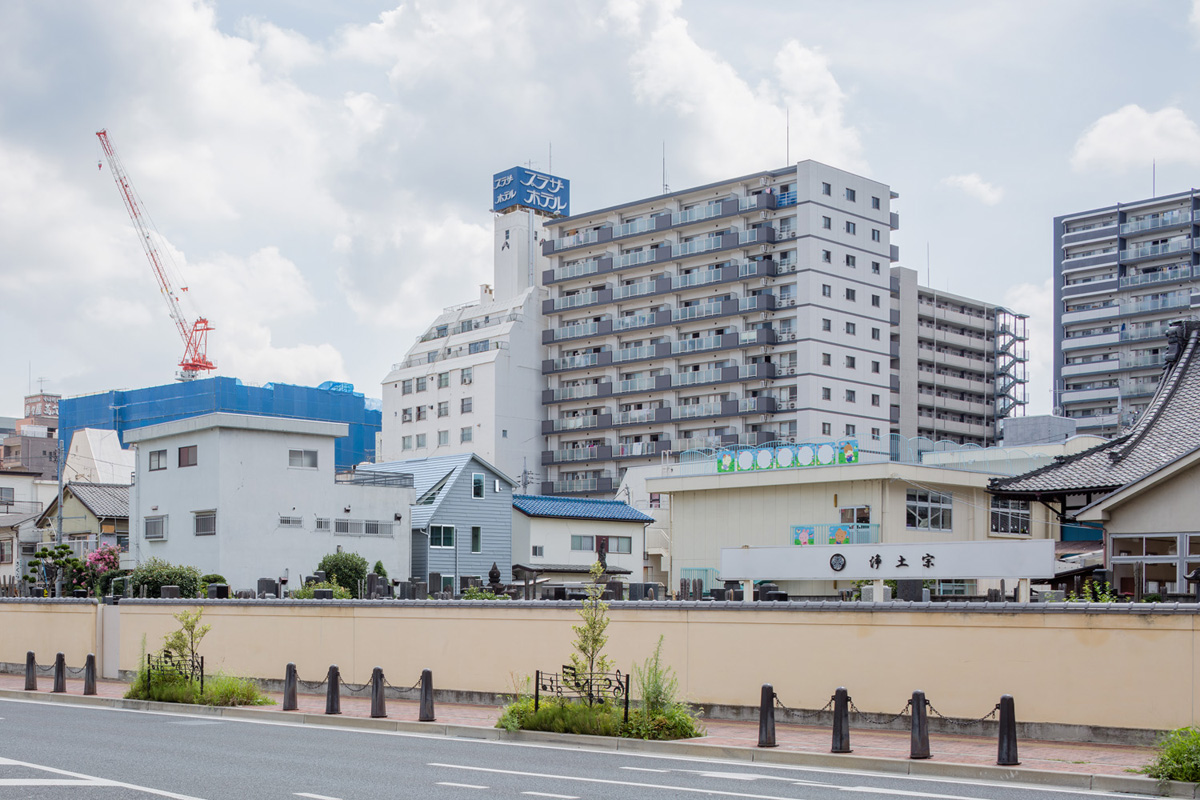
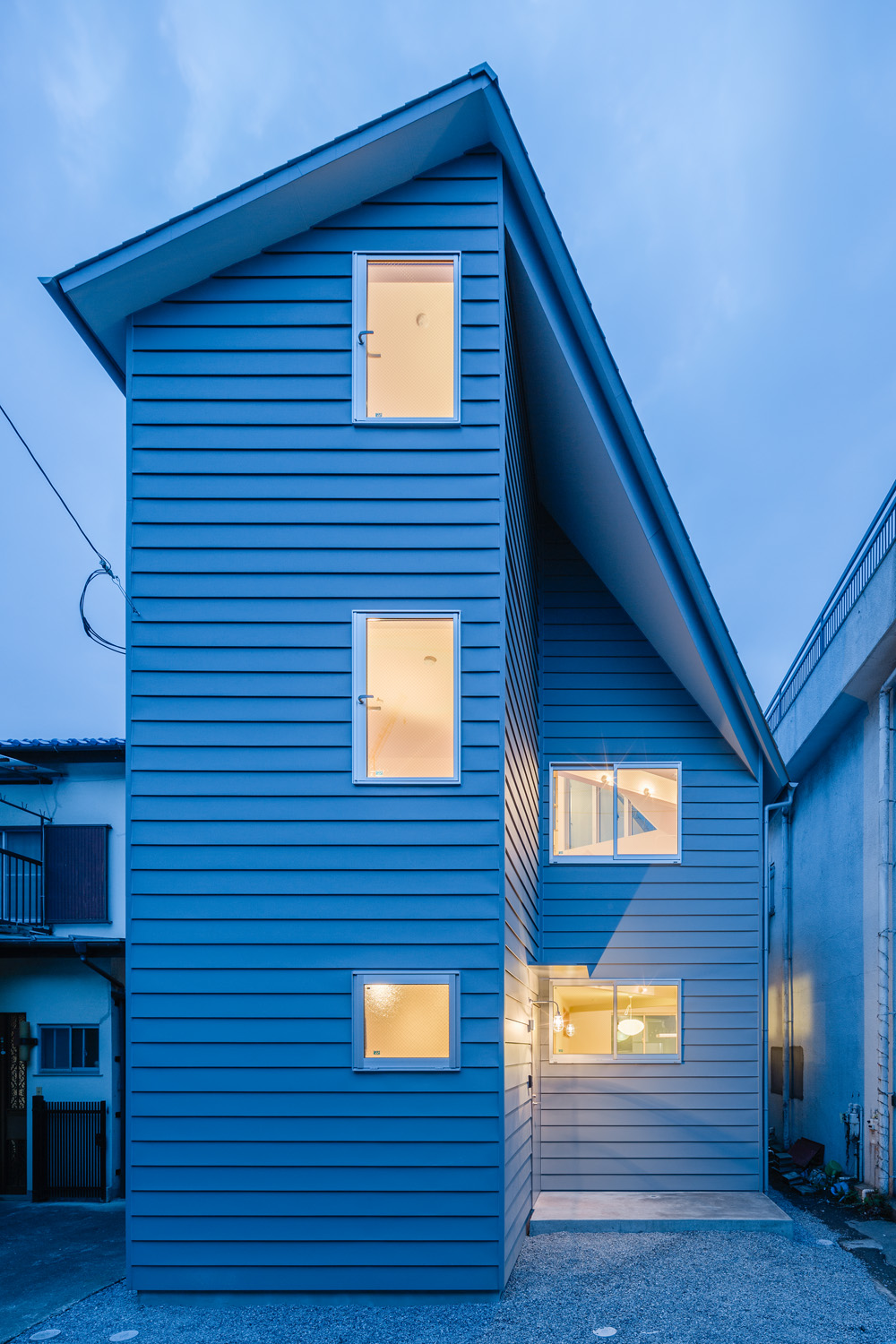
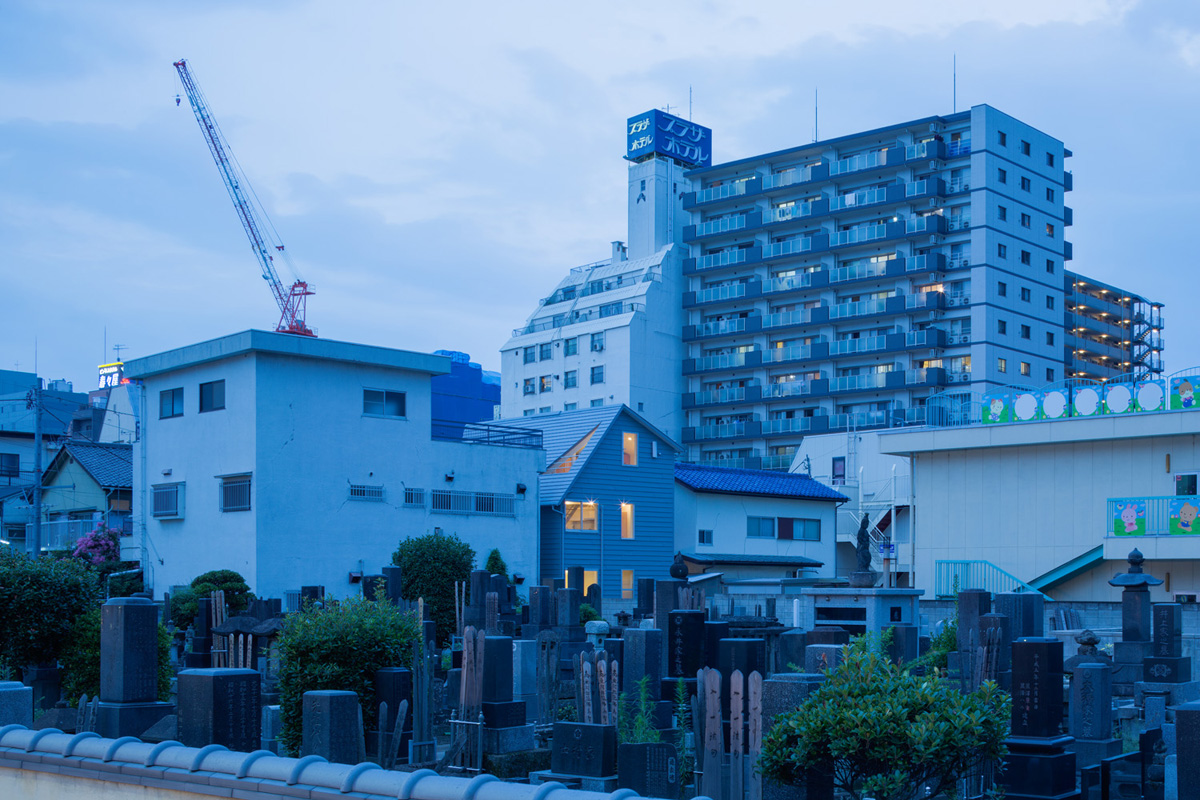
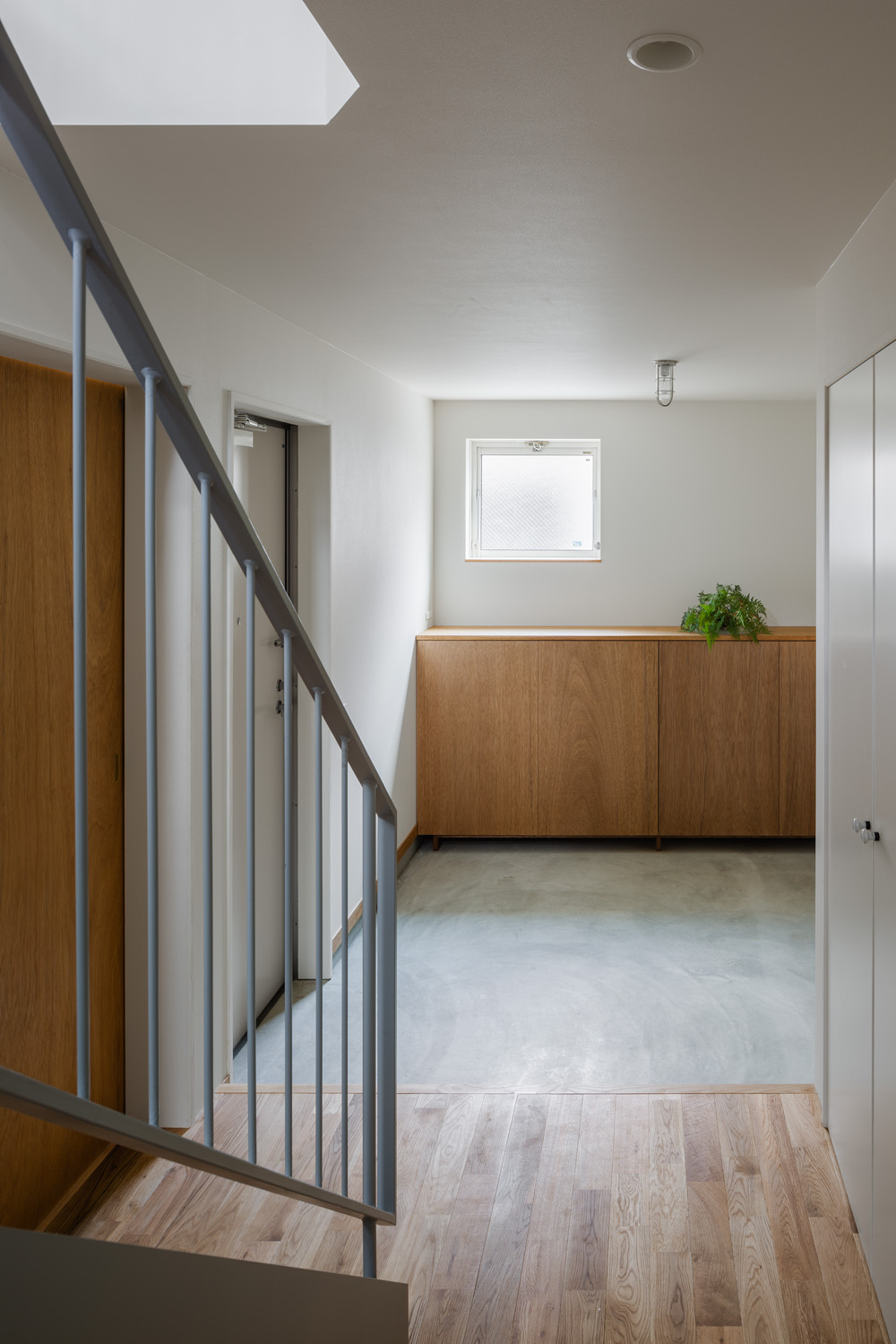
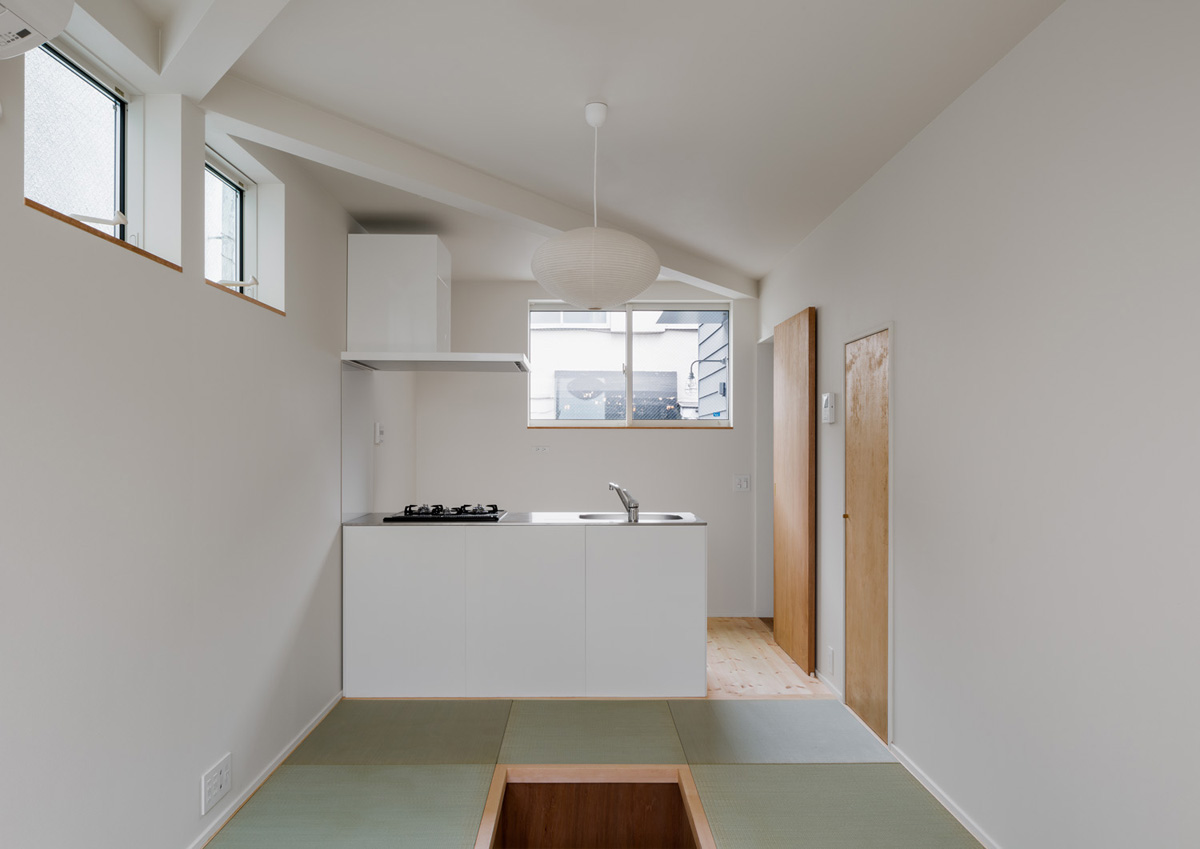
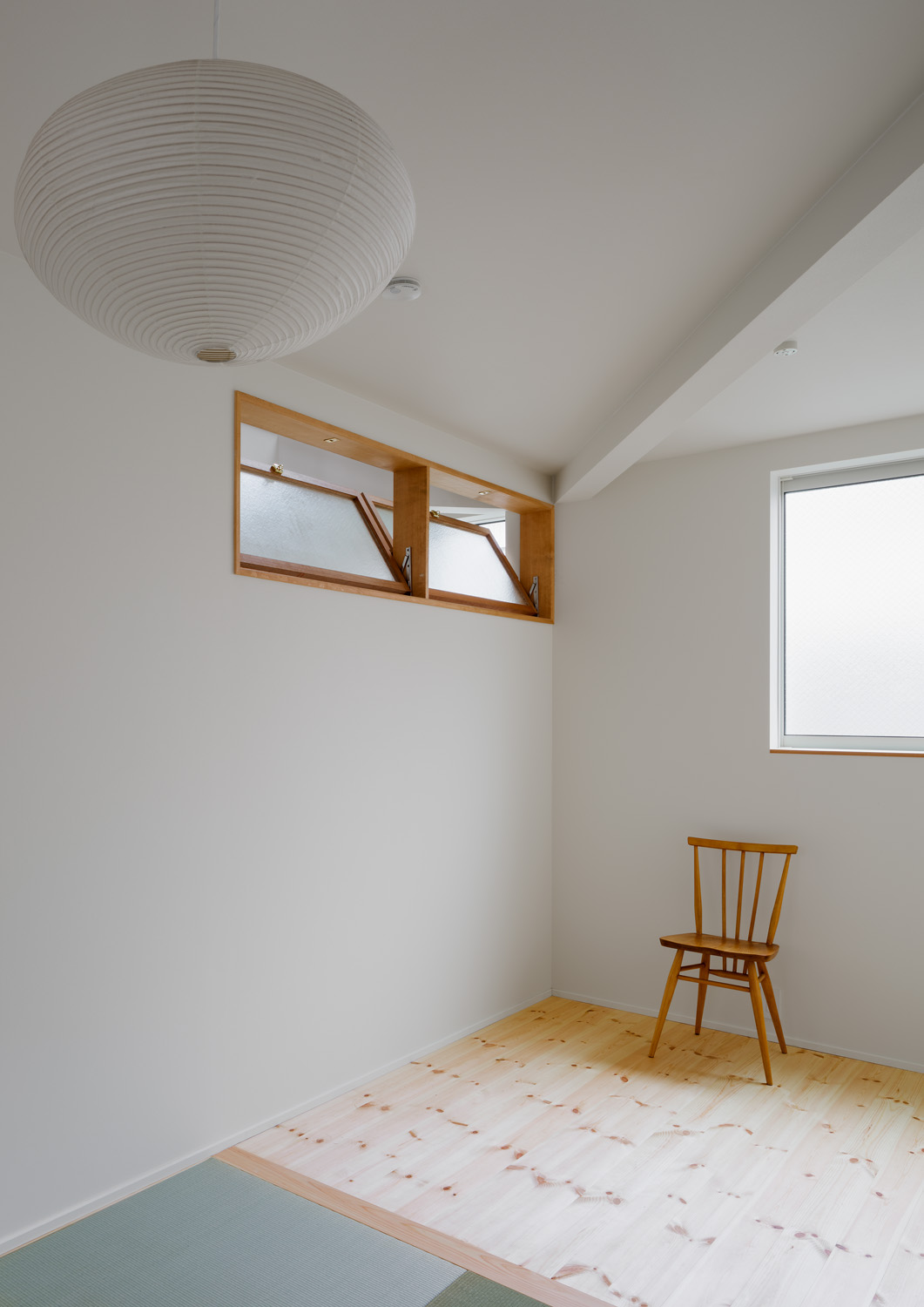
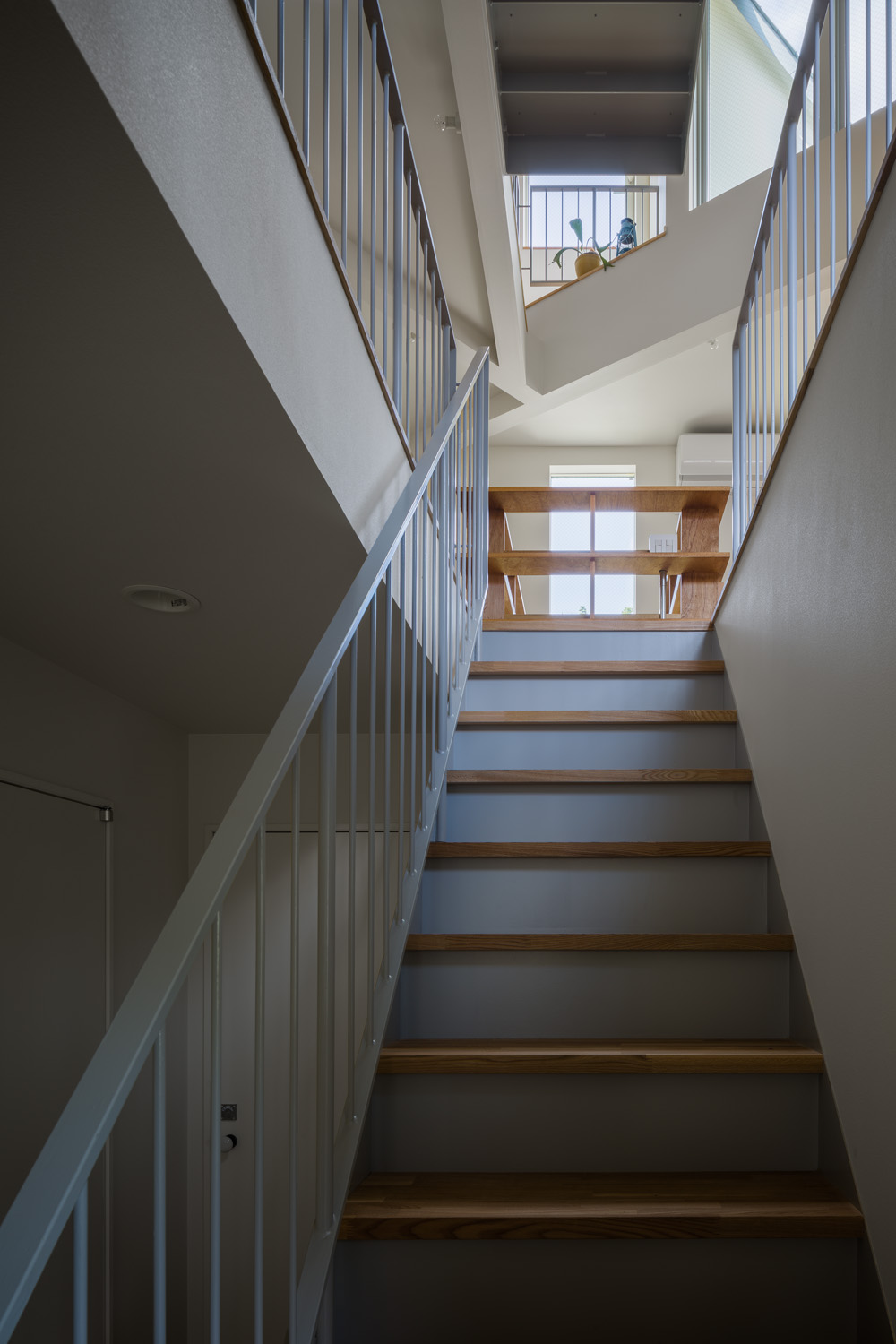
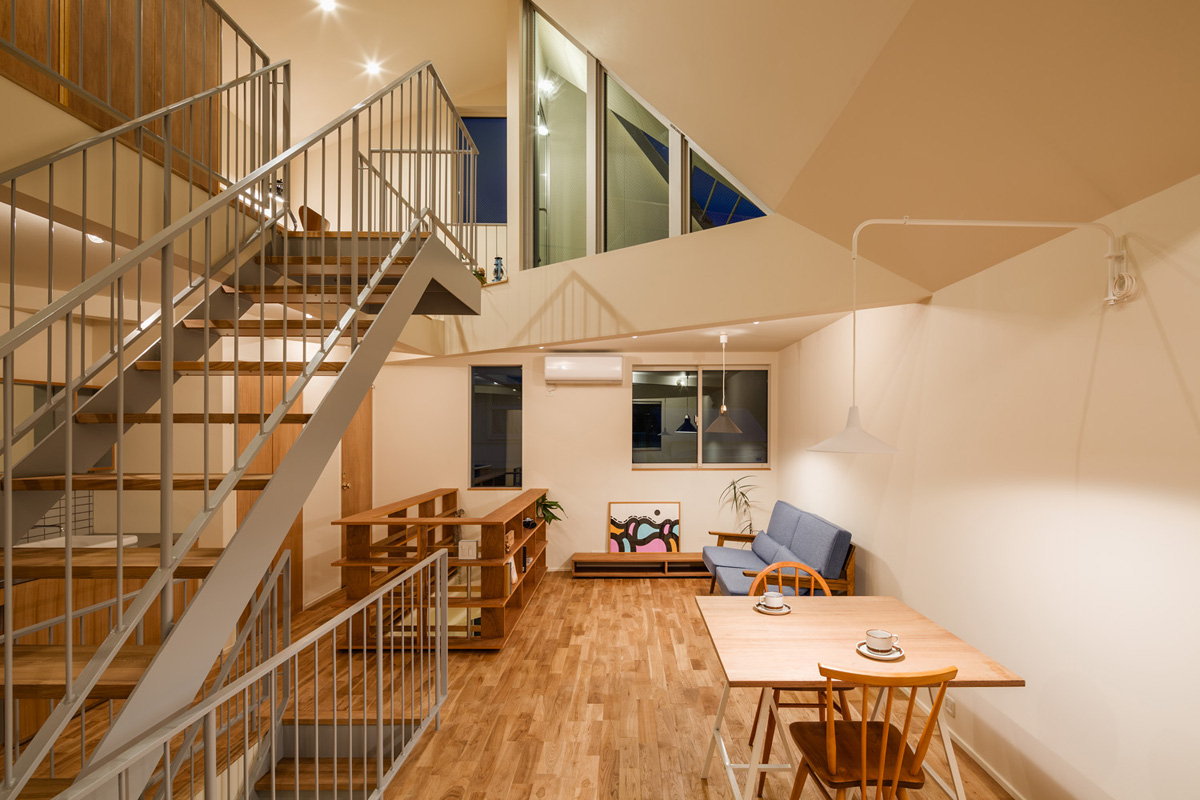
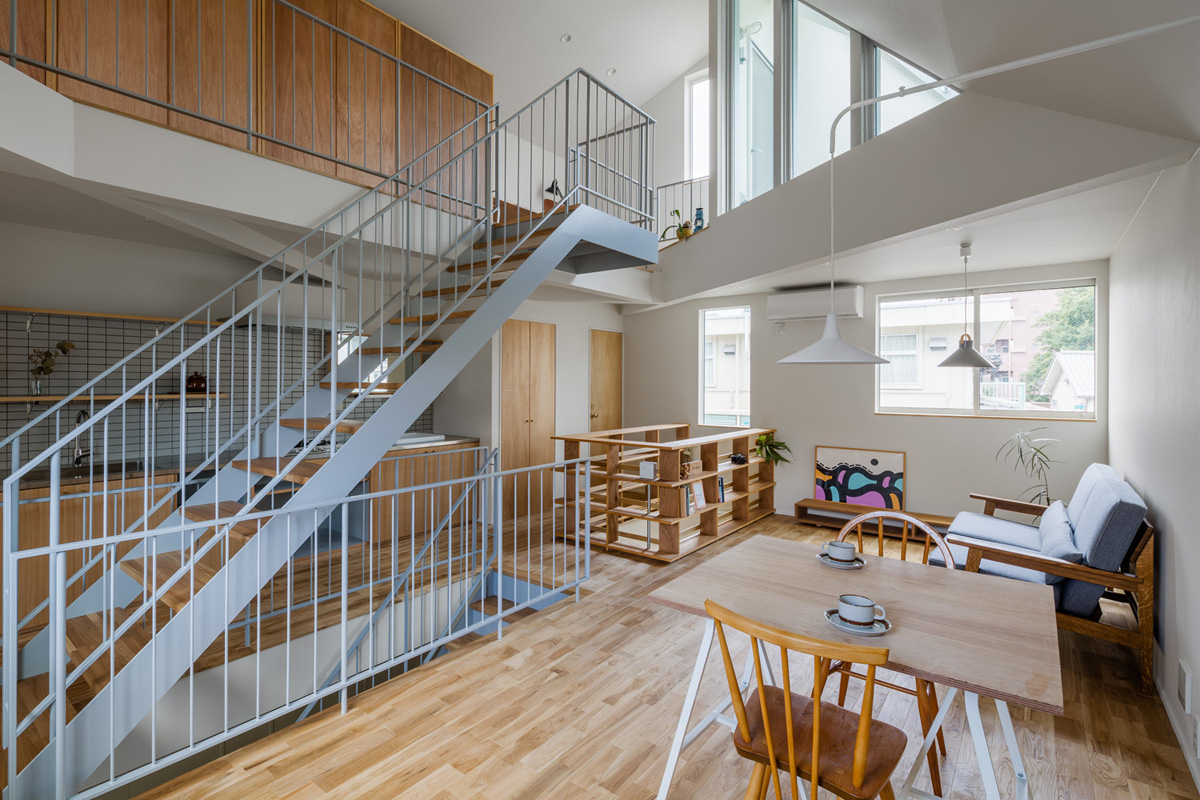
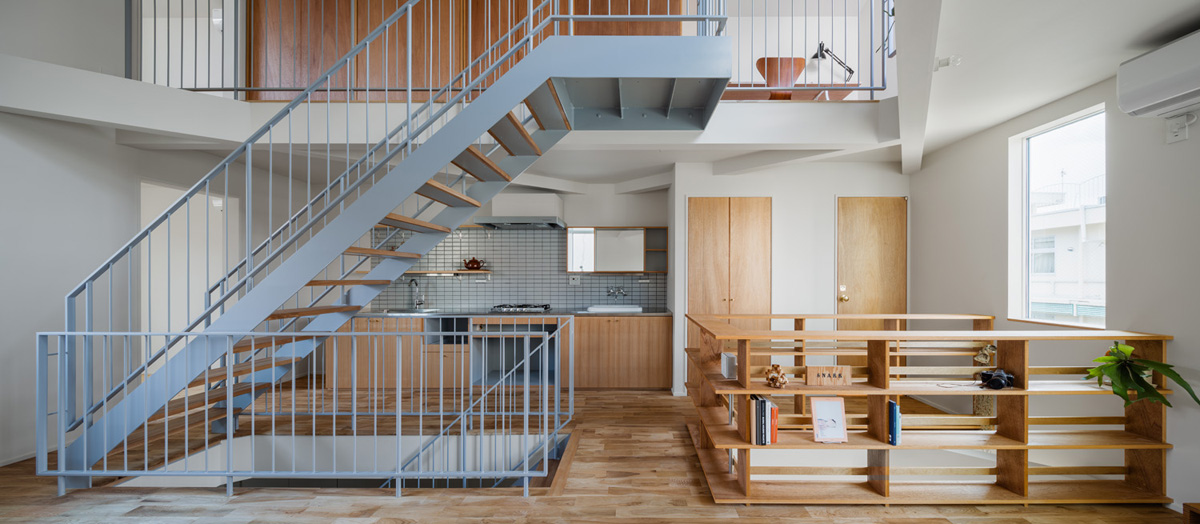
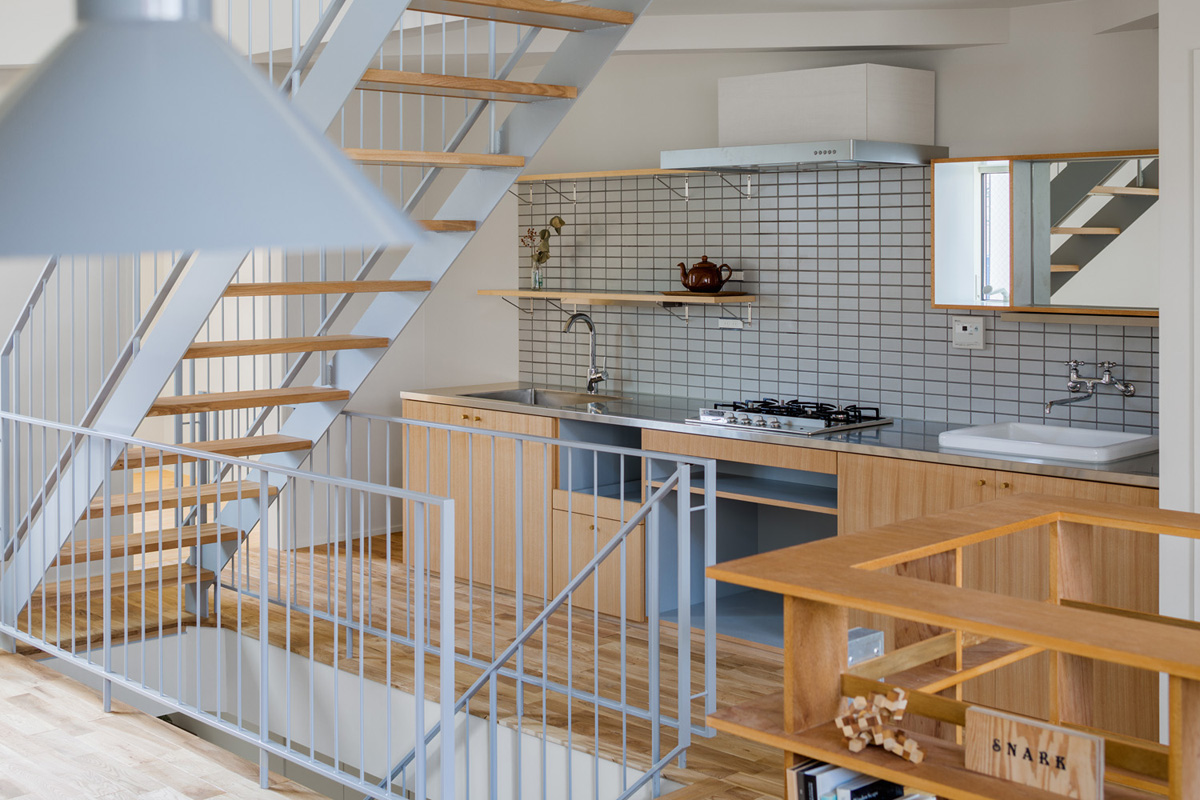
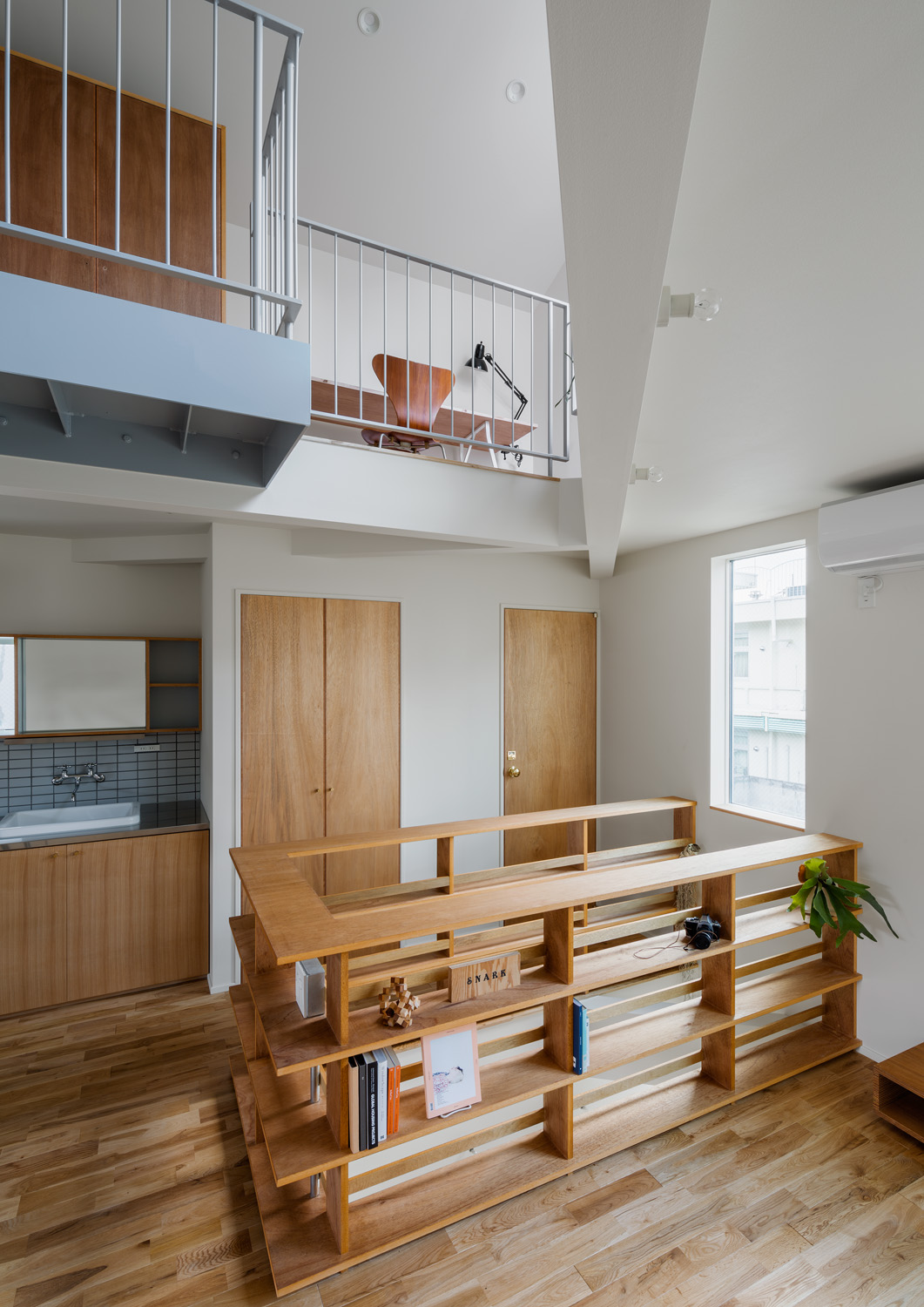
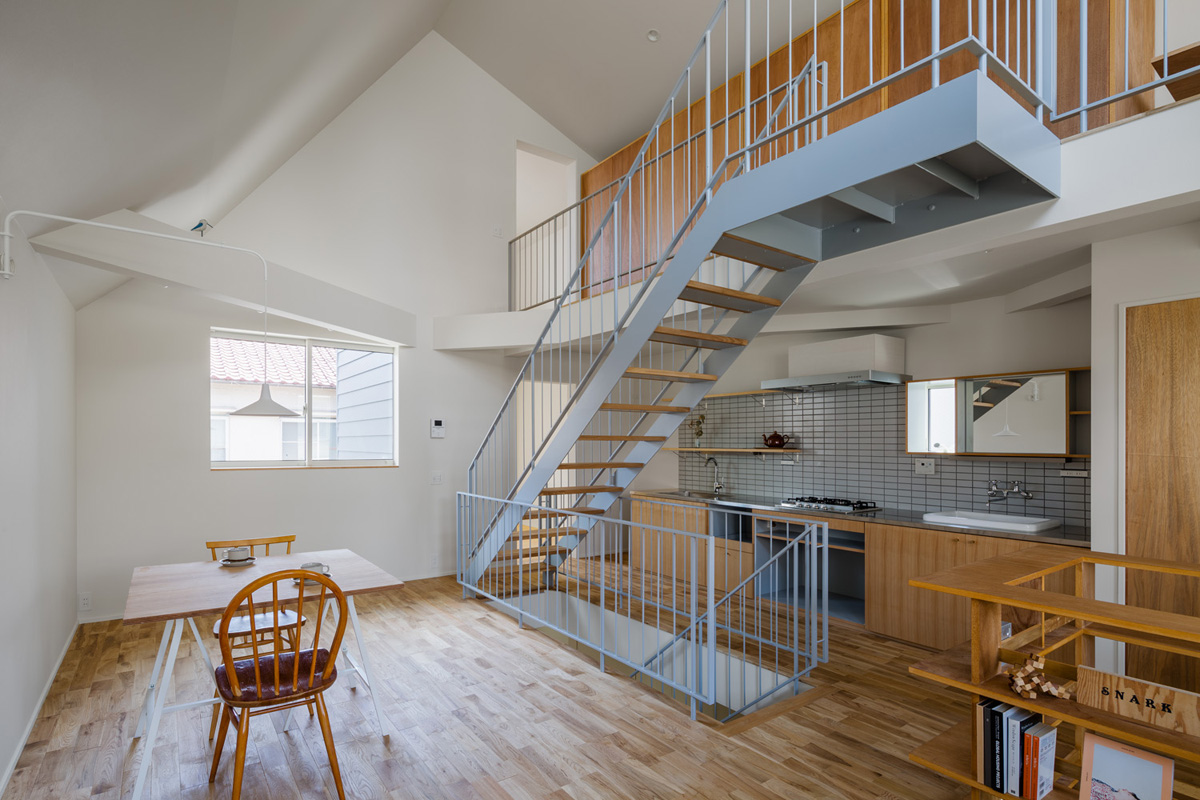
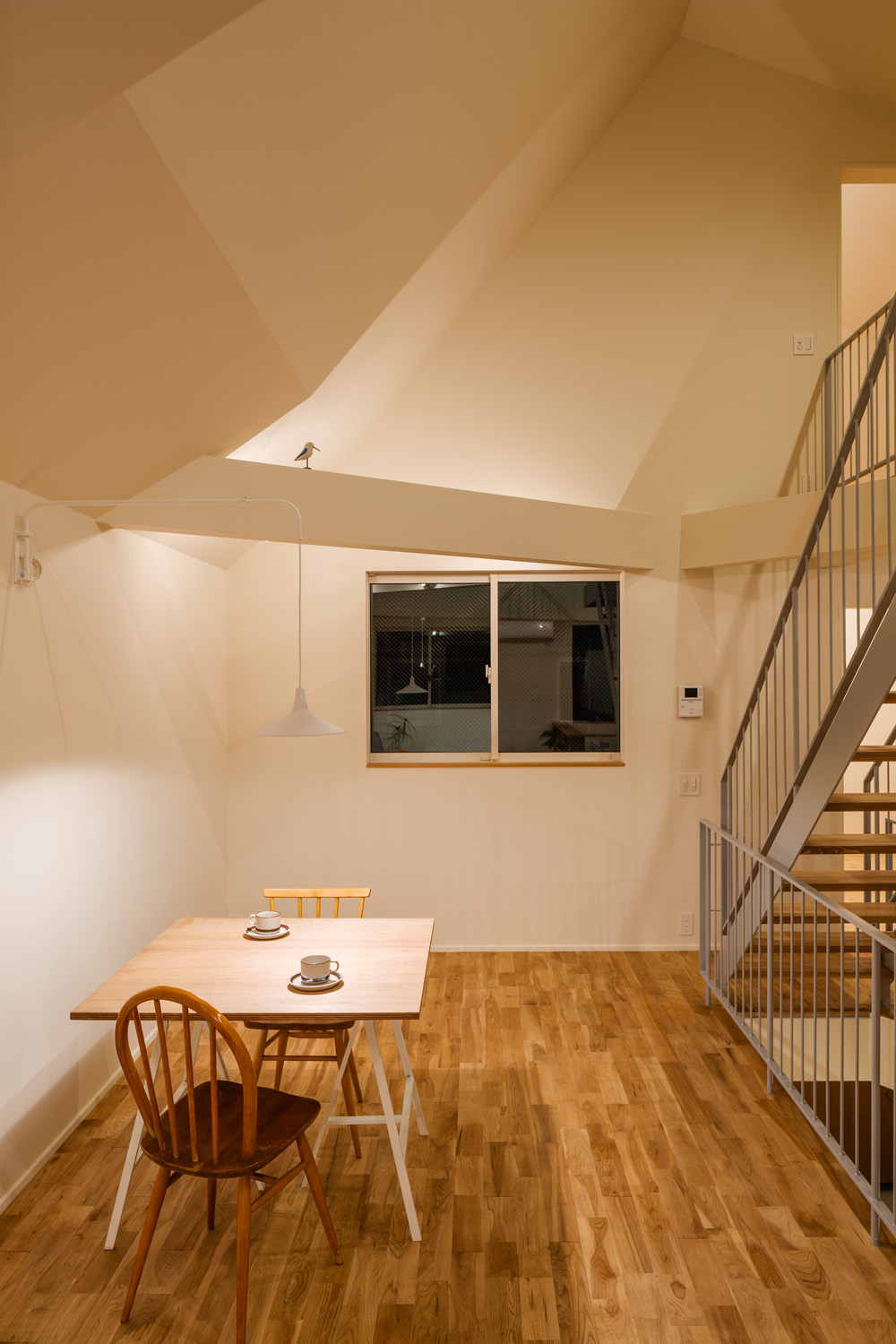
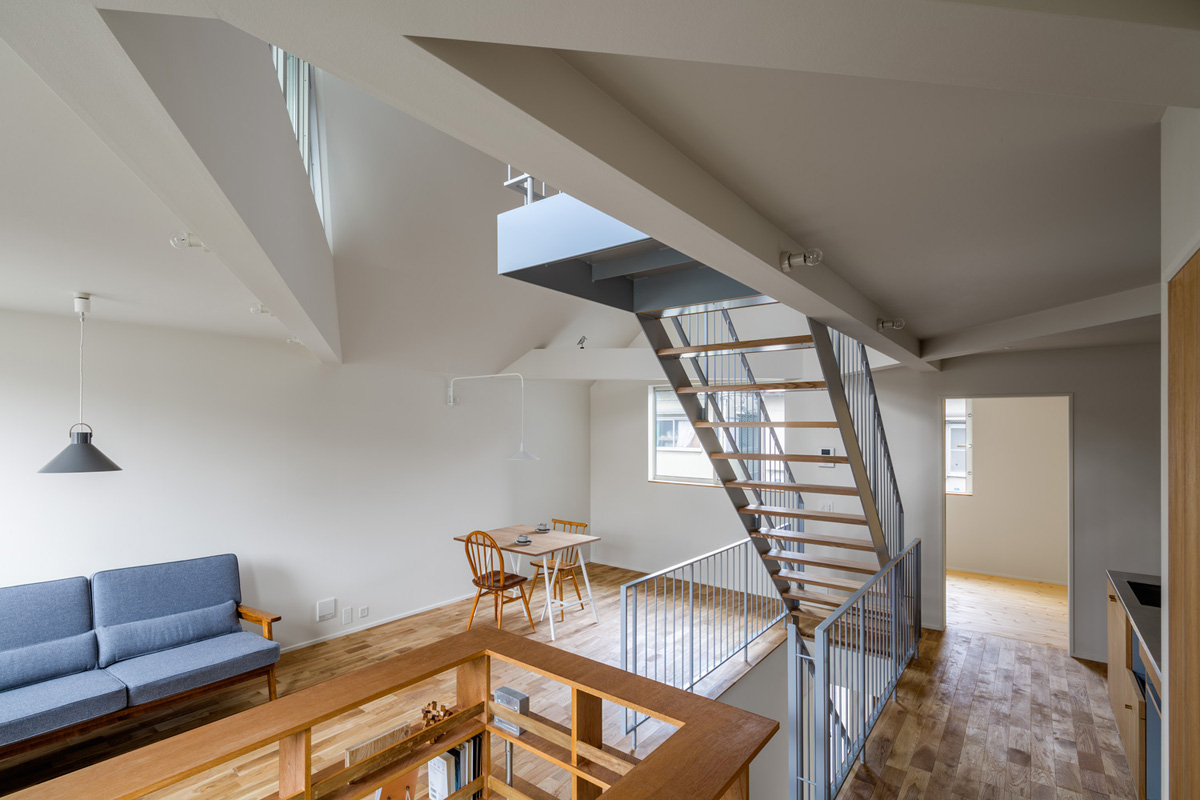
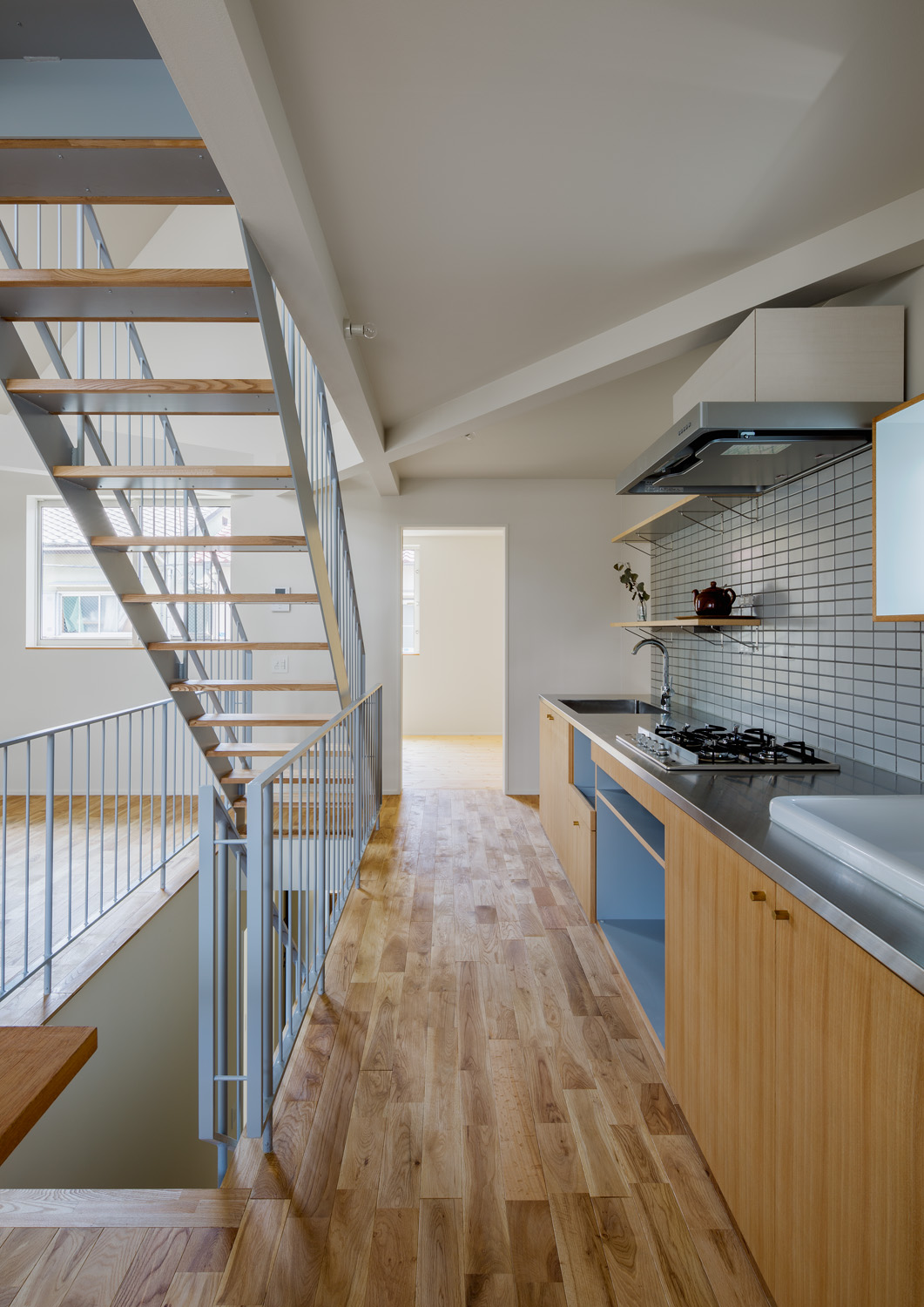
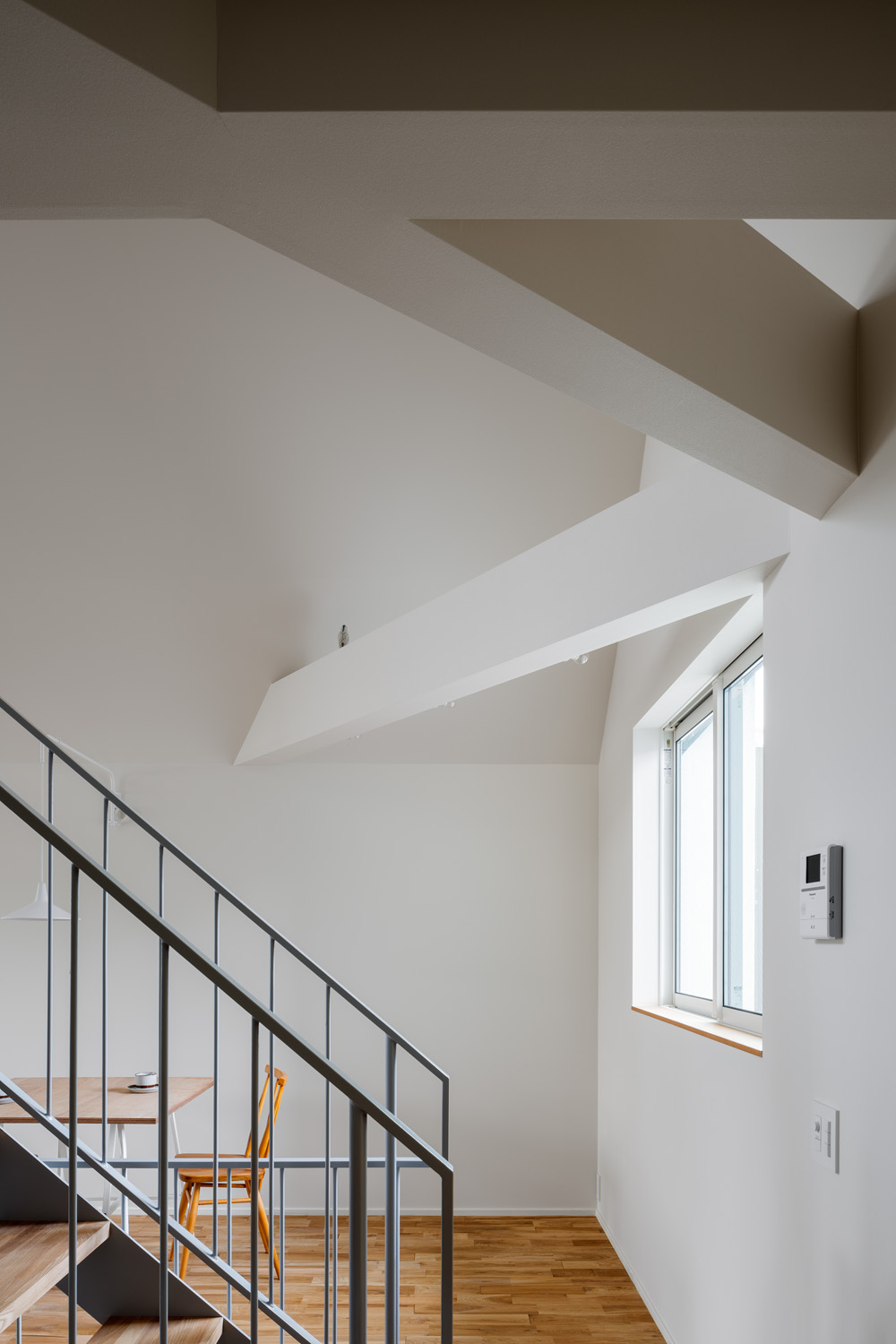
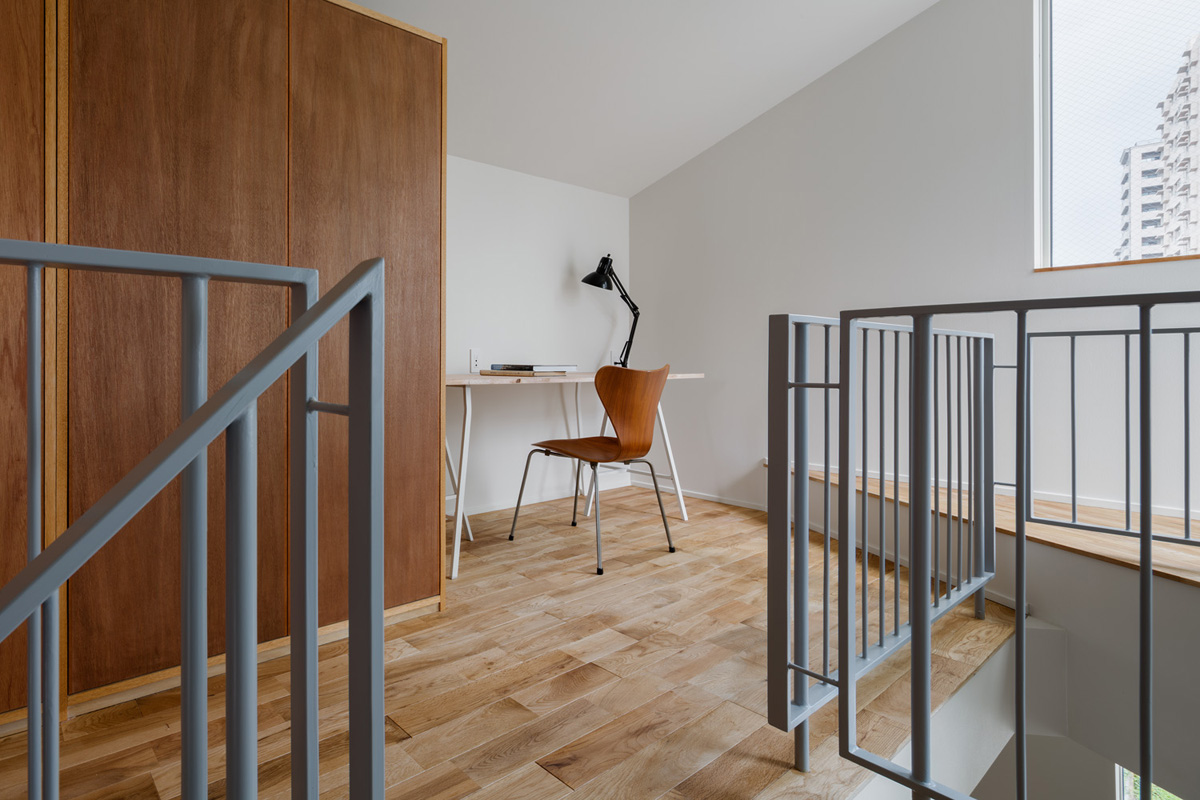
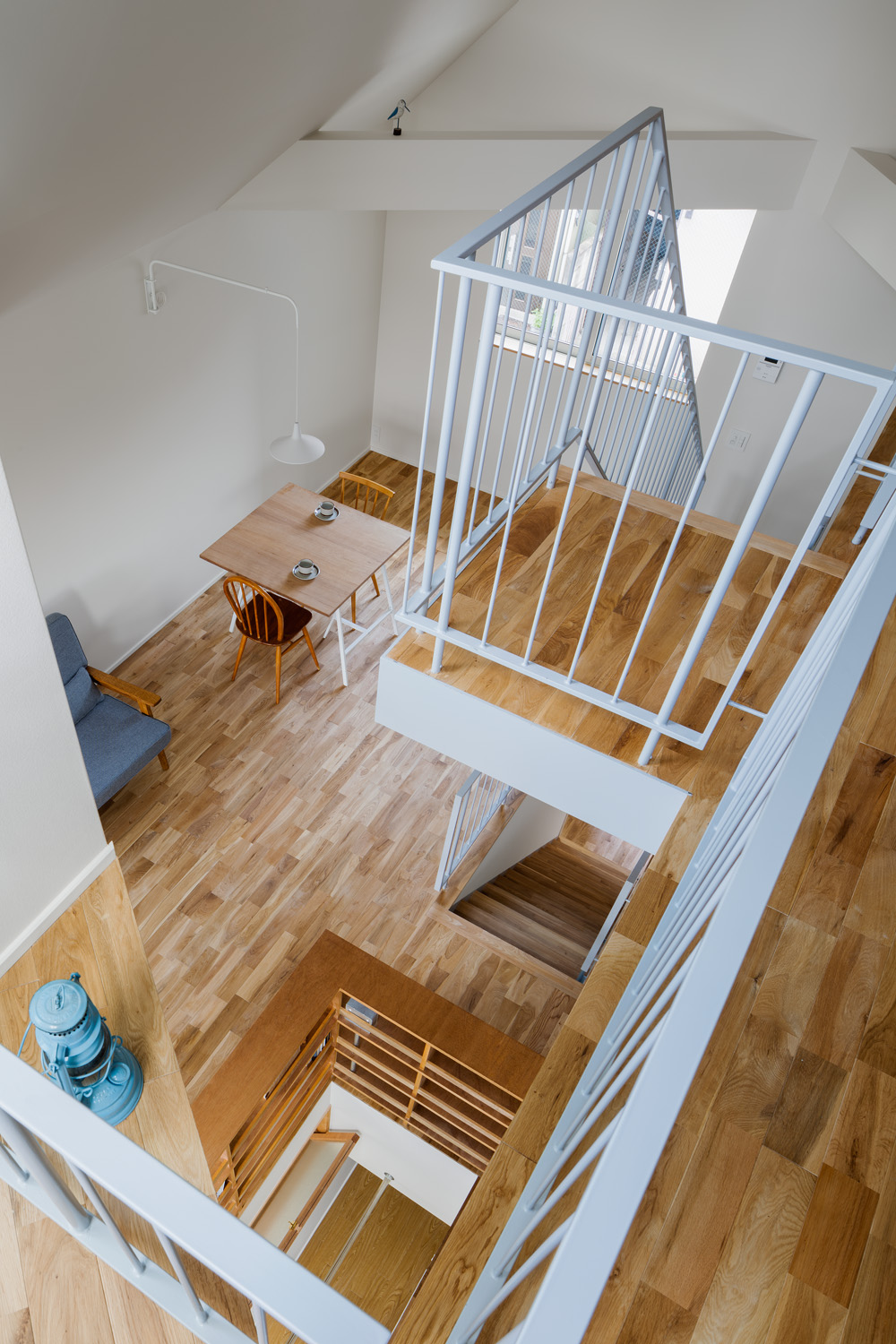
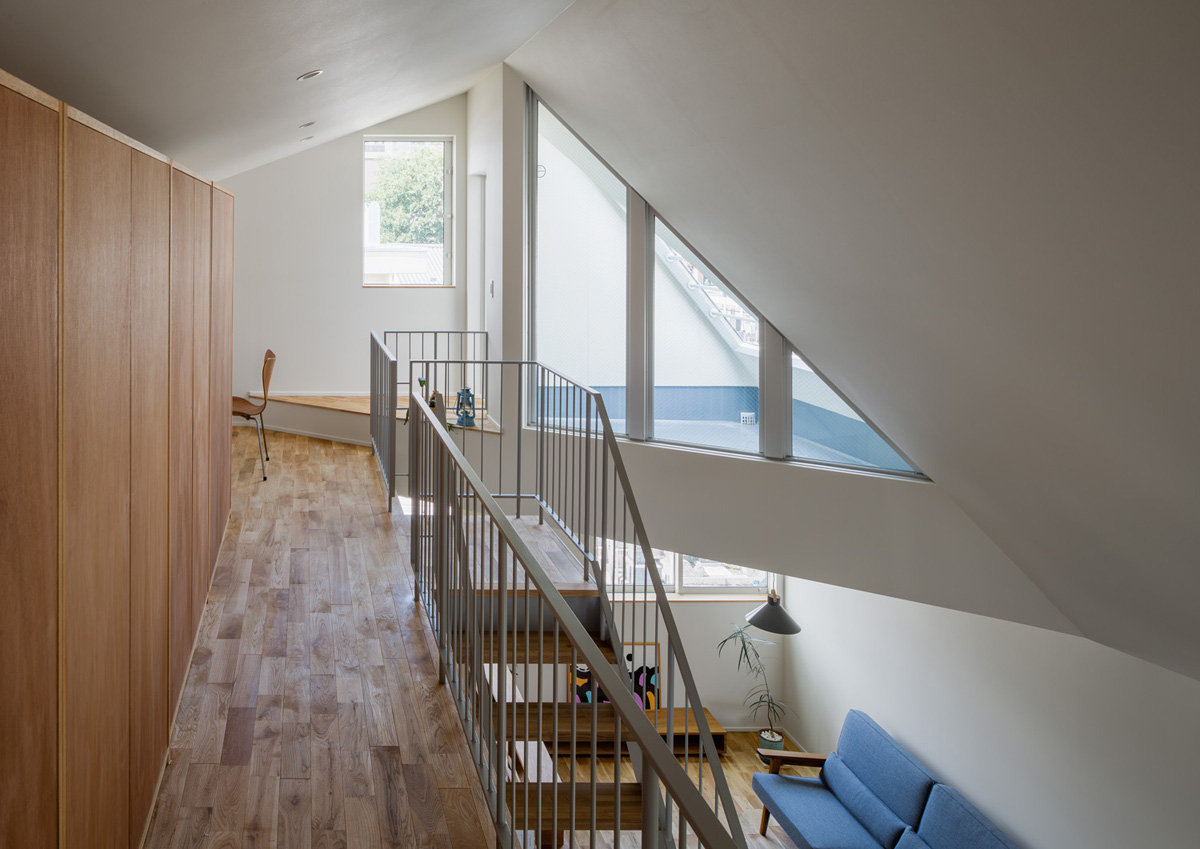
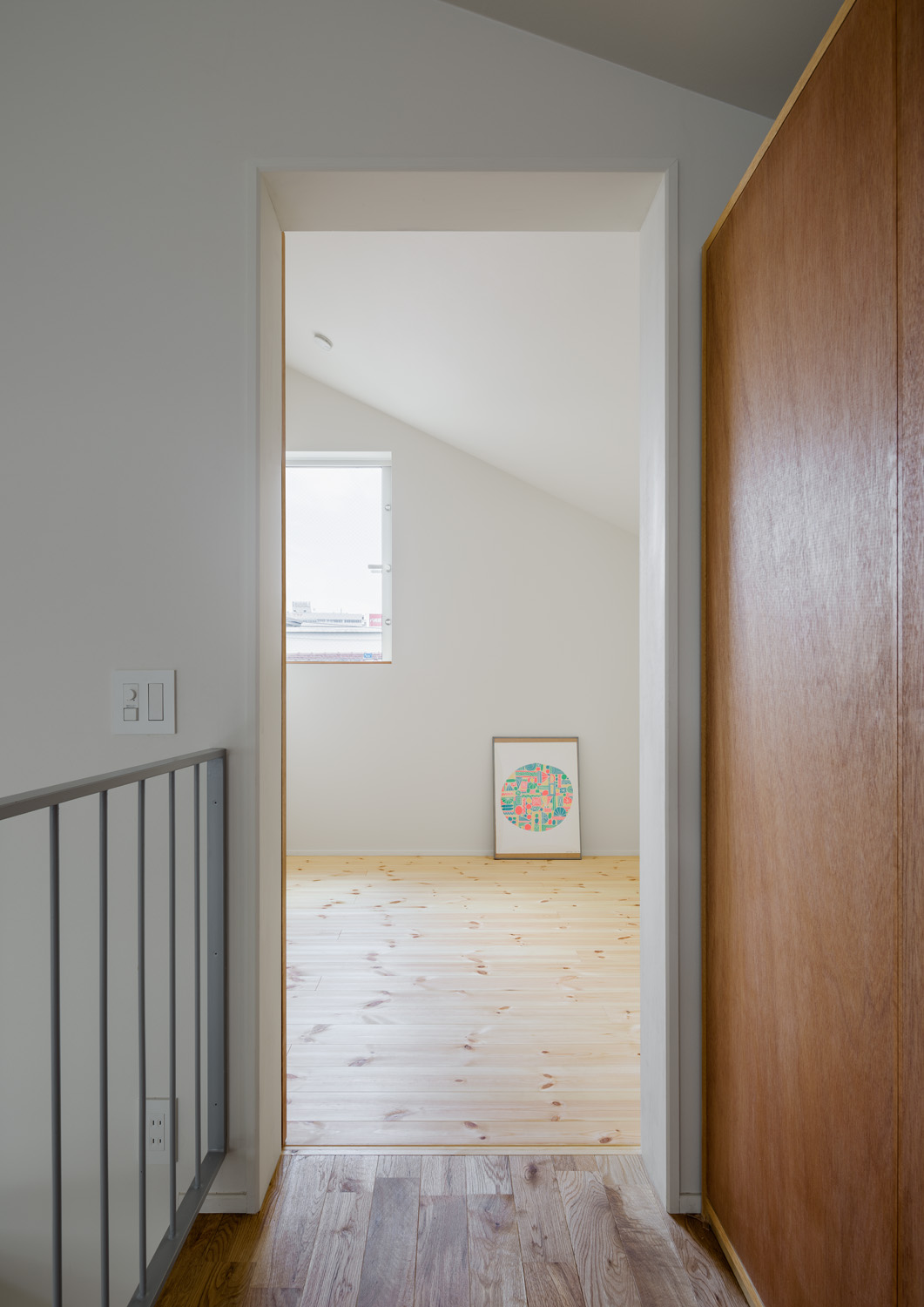
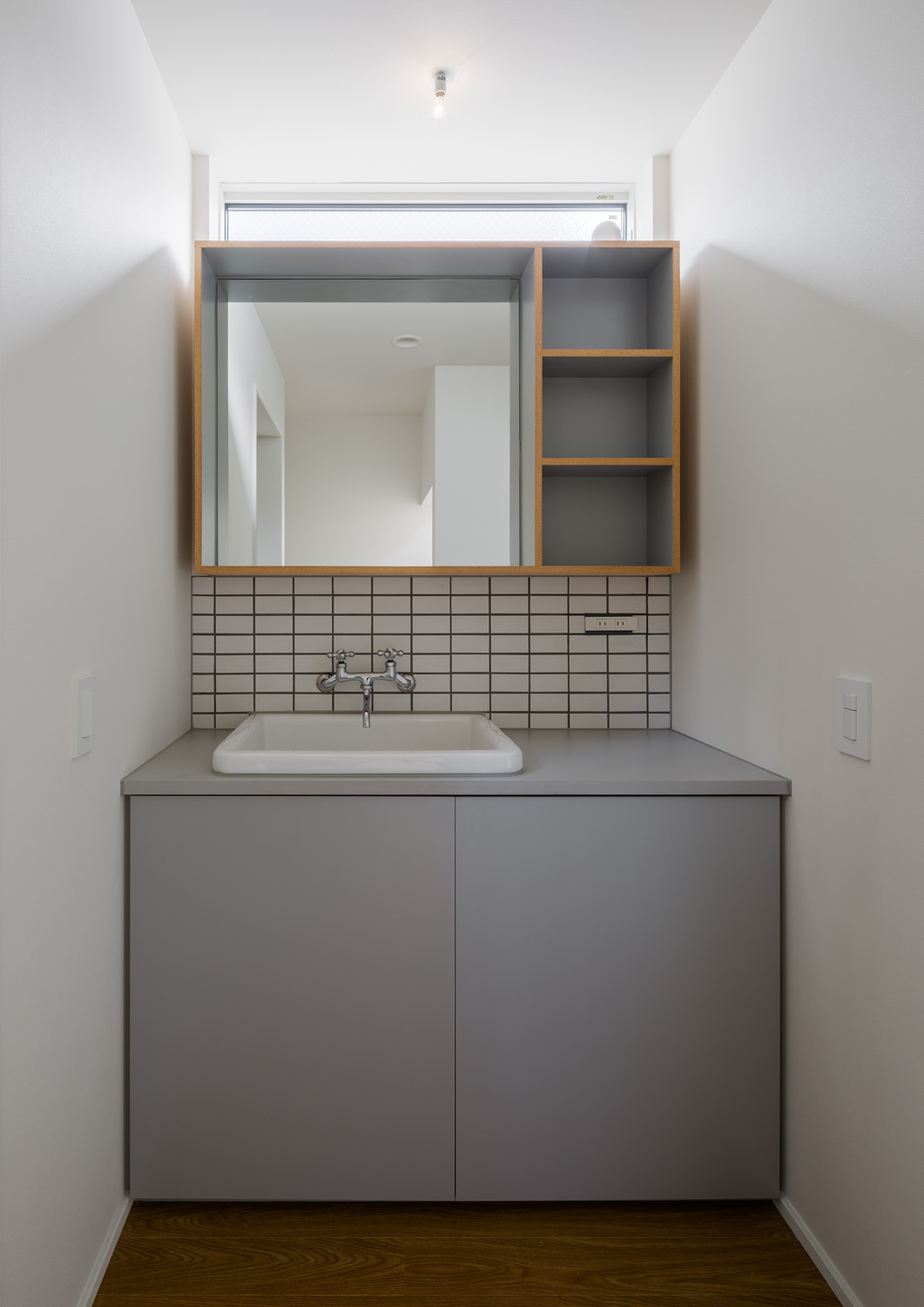
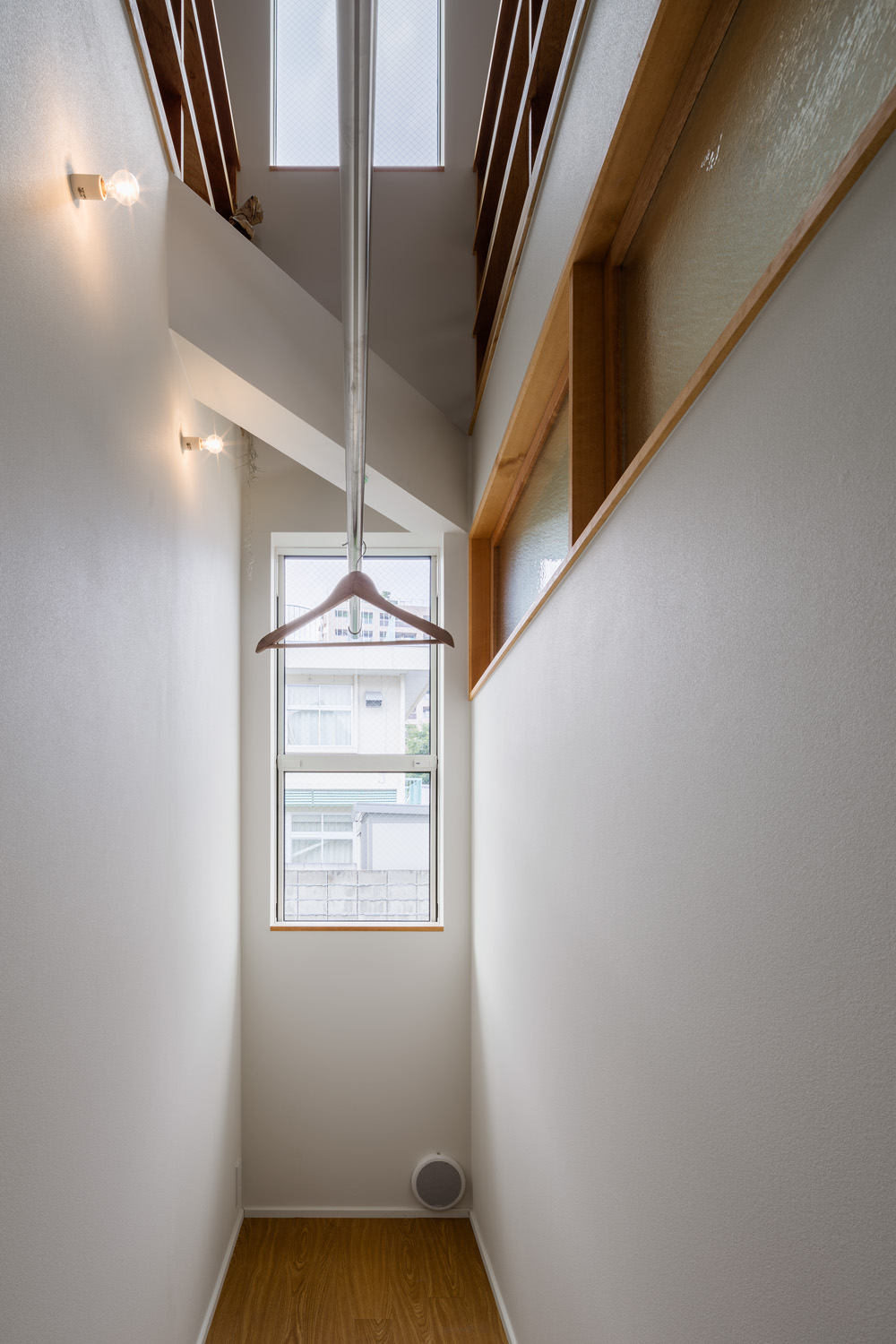
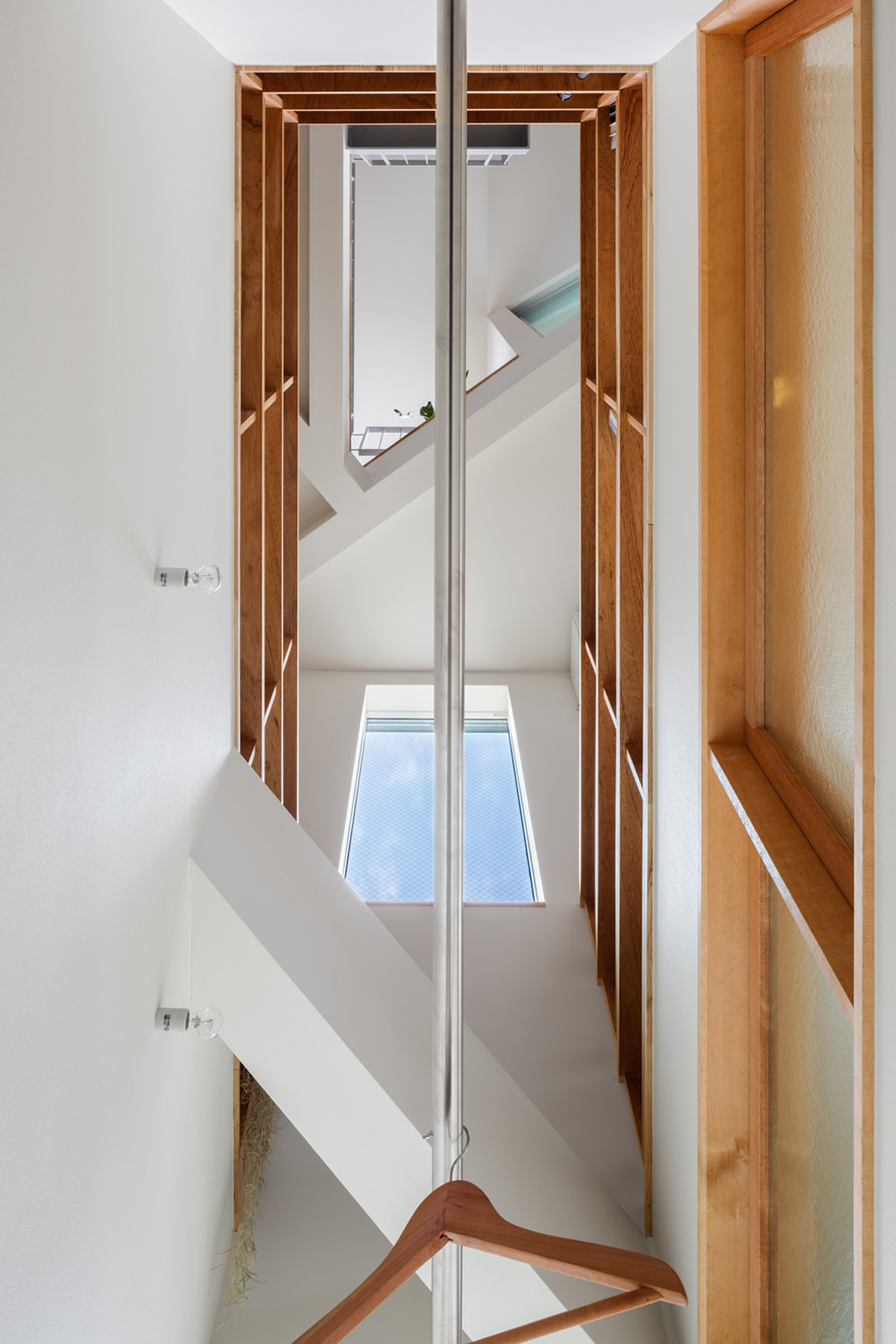
House in Tourimachi, the two-family house with 3 stories is located in Takasaki city, Gunma. It takes one hour from Tokyo by the Shinkansen. The site has a frontage of 6 meters, depth of 13 meters, which makes a 89㎡ long and narrow land shape. On the south is the 4 meters wide road, sharing northeastern border with a cemetery and otherwise surrounded by three-storey houses.
The client wanted a well lighted and ventilated double house duplex to share with their parents. We designed the ground floor for the parents and the 2nd and 3rd floor for the children of the family. Considering the cemetery as a universal opened space located besides residential area, we were able to create a preferable atmosphere together with a certain level of privacy.
Windows opened toward the cemetery and the three-layered stairwell on the northern part provided a steady amount of light and ventilation. And by sharing the whole atmosphere within the house, while having diferrent life style, the two generations, will be able to cherish their relationship more. The main design of this architecture is the roof wrapping up the whole house, embodying the cohabitation of two generations, and working as a shade at the same time with the southward expanded eaves. This house has a slab beam sloping irrelevantly against the plan, and this helps connect the room within this compact space without constructing a pillar inside.
There is no wall built laterally to the beams, the beam creates a separation and delivers an open space. The wall gives direction to the space instead of being the end of it. The whole architecture is connected with an environmental stairwell, free line beams, and the roof wrapping them up.
